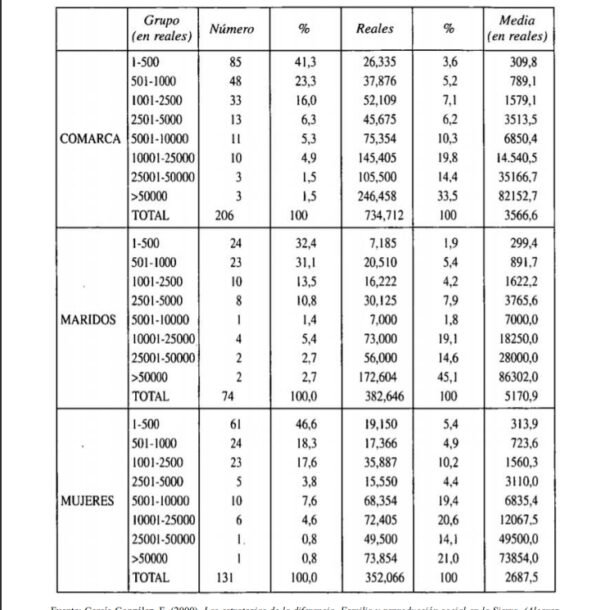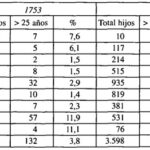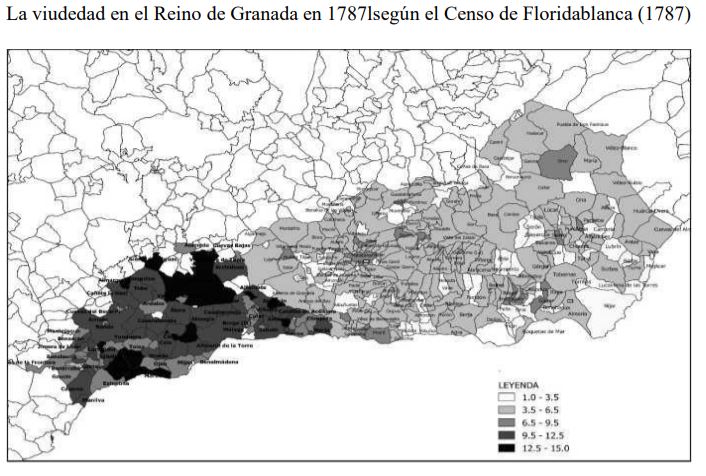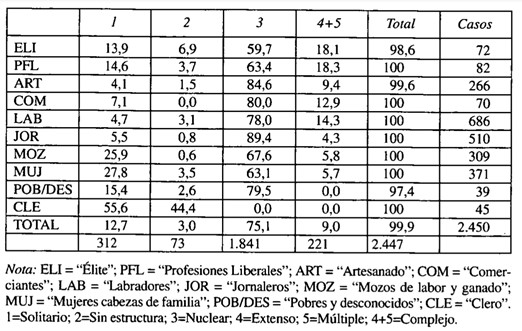
The study of household composition leads us to focus on family forces over the age of 25. While women tended to marry early, maids and men who continued to live together in the household did so because of the type of family economy, social status, or various situations such as widowhood or the illness of their parents. Therefore, the professions of the fathers conditioned the future of the sons; the family had political strategies for its reproduction and social maintenance. Therefore, trades such as craftsmen and merchants, where labour was important, tended to be patrimonialised by the family, initiating their descendants into the guild. For their part, labourers, farm labourers and day labourers needed productive labour forces to cultivate the land, although the unequal distribution of land ownership meant that many of these trades depended on specific leases, causing children to seek other alternatives. At the end of the 18th century, these trends only became more pronounced, with women’s percentage growth being particularly noteworthy.
Collection: Statistics
Project: 3. Rural world and urban world in the formation of the European identity., 4. Family, daily life and social inequality in Europe.
Chronology: XVIII
Scope: Secondary Education, Baccalaureate, University
Resource type: Statistics
Format: Table
Source: García González, F. (2000). Las estrategias de la diferencia. Familia y reproducción social en la Sierra. (Alcaraz, siglo XVIII). Madrid: Ministerio de Agricultura, Pesca y Alimentación, p. 123.
Language: Spanish
Date: 2000
Owner: Pablo Ballesta Fernández (Modernalia)
Copyright: ©Ministerio de Agricultura, Pesca y Alimentación ©Francisco García González ©Seminario de Historia Social de la Población
Abstract: Children who remained living in the family nucleus and performed differentiated tasks based on the sex of the siblings and the profession of the head of the household
Image
Tags







